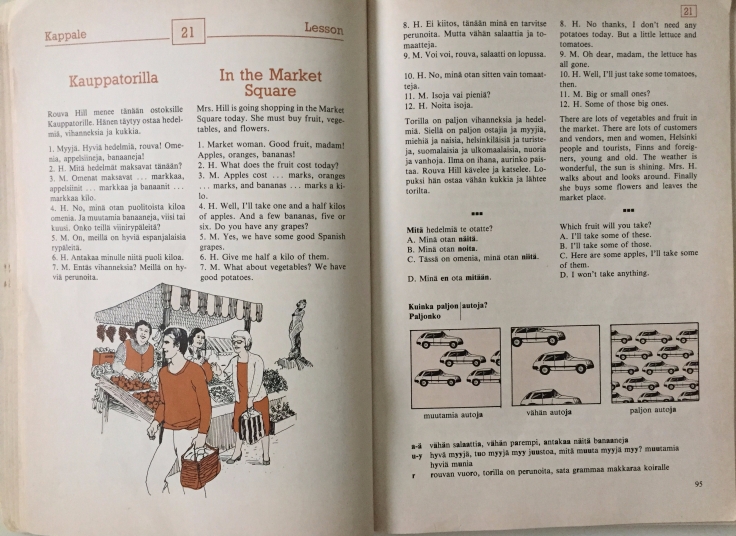Today I had a small chat with an acquaintance, which left me thinking about something I’ve been reading recently. I had a not funnyaha moment when I realized a behavior I read in a book expressed itself in real life. As part of my research, I have been reading extensively about Growth Mindset by Carol Dweck, both the book and different research have been done by Dweck and others. This is not a post about Growth Mindset, as I am not here to debate whether G.M. is legitimate.
In the book, Dweck illustrated the two mindsets with many different inspirational stories and anecdotes, which led to criticism that the book is watered down, boring and repetitive. I personally had a hard time finishing the book because of its structure: all stories ended with lessons about people having the two different mindsets. I thought to myself why someone, who is very highly regarded in her field, with years of experiences working along side with some of the smartest people in the field committed that simple mistake, leading people to disregard her work saying the book can be summarized in 15 pages or less? Or did she?
The small chat today sparked something in my head, as I didn’t recognized the behavior immediately, and when I did, it suddenly made sense why Dweck went on and on with those anecdotes. Simply because those inspirational stories shed light on the many different dimensions of having a fixed mindset or a growth mindset. Not everyone having a fixed mindset (or growth mindset) behaves in the same, predictable ways. It can’t simply be explained in several paragraphs like some have attempted to do so in the book’s reviews on Goodreads.
So what was the discussion about? We were basically chatting about Finnish language learning experiences of our own , and I was expressing how I found Finnish grammar challenging (I am learning about Noun types in class & at level A1) and how difficult it is to find learning materials compared to when we were learning English language (We are not native English speakers). When we moved on to some random questions about English standardized tests (TOEFL & IELTS) that we needed to take before coming to Finland, they started telling me about how they took the test (and effortlessly got a certain score) without even studying for it, and how they felt they could have done much better (in a way implying that they could achieve much better scores if they cared to study) still given that they have been using the language for years (more or less a decade).
I have to say that their scores on that test is already an achievement, especially when they didn’t even study for it. One with such language skills is qualified to apply for most Bachelors, Masters, and even Ph.D programs, in which English is the primary language of instruction. Being an English learner & later – a teacher myself, I had worked for more than 3 years (2 years at a public university & more than a year at local English centers) and taught different levels of ESL students, I know that it took hundreds of practicing hours to gain even 1 point on 1 skill in such language tests. The last time I took that test was several years ago when I was still working at the university, and I remembered I spent at least 1 month studying, practicing, taking mock-exams & even asking my coworkers to be speaking examiners. And that was only 1 month because I taught English everyday, and I was already more familiar with the test formats than most. I probably had my hands on almost every English standardized-book-test available back then, thanks to the university library. Would I study for the test if I have to retake it again now? Absolutely yes, there are plenty of skills I need to remaster: note-taking, reading techniques, essay writing skills, etc.
That being said, I actually felt ashamed when admitting that I worked very hard when I needed to take the test. Because for a moment, I got caught in the mindset that saying so would make me appear less smart. In her book, Dweck discussed how many want to appear / feel smart, and they think effort (or trying) makes them look dumb. Simply put, if you’re good at doing something, you don’t have to try. Dweck also went on and discussed how the not-trying could make themselves feel better when they are able to describe past events in “could have been”, and getting caught trying would rob their chances to imply it would go better. This is not related to the conversation I described above as I don’t want to make any assumptions or implications, and it would be unfair for me to judge the other person without knowing little to nothing. The conversation is there to illustrate my feelings toward the situation.
As someone who firmly believes in the power of personal growth, I wonder what’s so wrong with trying, and why most people are afraid of to admit that they make an attempt to improve themselves (me included – sometimes- apparently). I know there are those who rarely even try at schools and still get good grades, those who possess some abilities that make them better than average, etc…And then there are people who work super hard and still lag behind. Do people question the intelligence of those like Elon Musk, Bill Gates or Thomas Edison, when obviously they are some of the most hardworking people on Earth? Why is that socially acceptable to work hard when your ambition and intelligence are (like Elon, etc) proven, and then not really acceptable when (the rest of us) you get caught trying?

In her book, Dweck used the term “a work in progress” as something we should all consider about ourselves when it comes to learning, trying and failing. If you are a work in progress, there is no shame in trying. That, according to Dweck, is one of the growth mindset’s characteristics. And yes, I have to remind myself everyday that I am a work in progress, and there is no such thing as instant success, or at least, for me. (I’m talking about you…Finnish language- you’re my current Everest!)
A final note about the book & the idea of Growth-Fixed mindset, many skim through the book, and then play-down the idea of 2 Mindsets. I don’t think those are qualified to judge the book. The GM book is a bit repetitive and written in a simple structure for a public audience, but one can always challenge oneself by reading other works from Dweck like the Self-Theories, for instance. Self-theories is sort of like the academic version that lays out the research that is behind Mindset.

